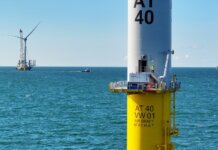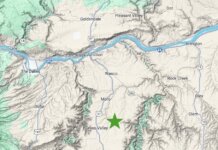GE Research has been awarded $5.8 million in funding from the U.S. Department of Energy’s Advanced Research Projects Agency – Energy (ARPA-E) for a three-year project to develop and demonstrate a super-fast DC circuit breaker that is essential for enabling next-generation medium-voltage direct-current (MVDC) grids, according to GE Research.
This project is part of a broader interest by ARPA-E to upgrade existing alternating-current (AC) distribution grids and expand opportunities for congested areas to access remote clean energy sources to meet their future power needs.
“Many big urban cities today are facing higher electricity demands because of growing applications such as electric vehicle charging, with limited options for tapping into new energy sources,” says Timothy Sommerer, principal scientist at GE Research and principal investigator on the MVDC program. “By upgrading existing AC distributions grids to MVDC grids, it would allow these cities to cast a much wider net in securing new clean, renewable energy sources.”
Sommerer continues, “The new super-fast DC circuit breaker we’re developing is an essential component for enabling the distribution grid upgrade from AC to MVDC. Because DC doesn’t inherently contain natural breaks like AC that help manage faults, you need to have a switch with an extremely fast response time that can create these breaks. That’s exactly the challenge GE’s technology will address.”
Sommerer explains that the team will leverage GE Research’s gas discharge tube technology to develop the MVDC circuit breaker. Gas discharge tubes switch without mechanical motion by transitioning the internal gas between its ordinary insulating state and a highly conductive gas plasma. This allows for the much faster response times that are required to handle DC currents.
The MVDC distribution lines envisioned will support up to 100,000 V and more than 100 MW of power to meet the needs of large cities. The land area required to power a city by renewable sources such as wind, solar and hydro is three to 10 times larger than the city itself and is usually some distance from the city, GE points out. At the same time, electric urban power demand is increasing as vehicles and other fuel-burning power users go electric.
In general, the increasing use of DC current in electricity transmission has the potential to greatly expand from where utilities can draw power to meet their energy needs in two important ways, says GE. First, electric power can move more efficiently over long distances on high-voltage DC lines versus AC. Second, an MVDC distribution grid can then take that HVDC power and distribute it more efficiently and effectively into a large urban area.
“The development of DC grid technologies could vastly increase the flexibility utilities have in addressing future power needs,” Sommerer adds. “Imagine the day when cities like New York, Chicago or Los Angeles have the option of accessing electricity from multiple wind installations in the Midwest to meet electric vehicle charging needs.”




